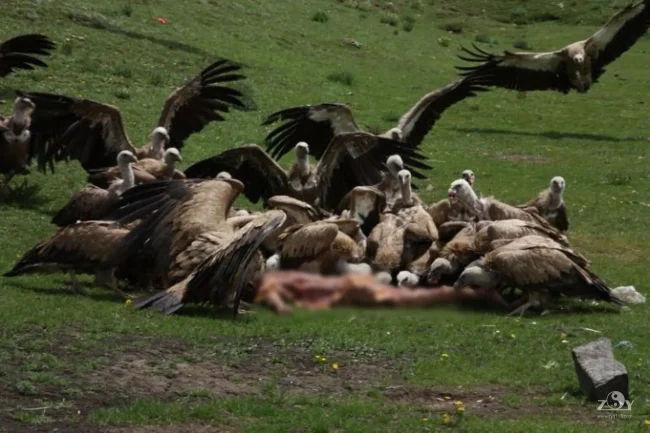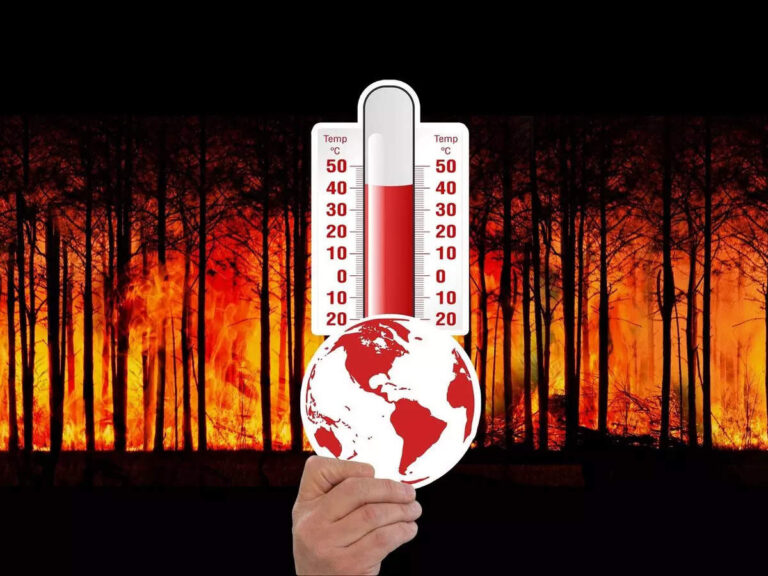Death is a universal phenomenon, but the ways in which different cultures approach the disposal of the deceased vary immensely. While burial and cremation are the most common methods of handling the deceased in many societies, there exists a fascinating and ancient practice known as sky burial, which holds deep significance in Tibetan Buddhist culture. Sky burial, or “jha-tor” in Tibetan, involves placing the deceased on a mountaintop to be consumed by scavenging birds, primarily vultures. This unique ritual is more than just a means of disposing of the dead; it embodies profound spiritual beliefs and cultural values.
Origins and Significance

Sky burial has its roots in Tibetan Buddhist tradition, dating back over a thousand years. According to Buddhist beliefs, the body is merely a vessel for the soul, and once death occurs, the soul transitions to the afterlife, while the body becomes an empty shell. The practice of sky burial aligns with the Buddhist principle of impermanence, emphasizing the transitory nature of life and the physical body.
The choice of vultures as the means of disposal is also symbolic. Vultures are revered in Tibetan culture as celestial messengers that guide the soul to the heavens. By offering their bodies to these birds, the deceased are believed to facilitate their journey to the next life, free from earthly attachments.
The Ritual Process

Sky burials typically take place in designated locations, often atop high mountain peaks, where the air is thin and the environment is conducive to natural decomposition. The process begins with the preparation of the body, which may involve dismemberment and exposure to the elements to expedite decomposition.
Once the body is ready, it is laid out on a platform or rock, exposed to the open sky. Monks may recite prayers and perform rituals to guide the soul on its journey. Then, the waiting vultures descend upon the corpse, swiftly consuming the flesh. The entire process can take several hours, depending on factors such as weather conditions and the number of scavengers present.
Cultural Perspectives
In Tibetan culture, sky burial is not viewed as a morbid or gruesome practice but as a sacred and honorable rite of passage. It is seen as a final act of generosity and compassion towards both the deceased and the scavenging birds. The offering of one’s body to the natural world is considered a selfless act of charity, embodying the Buddhist principles of compassion and non-attachment.

For many Tibetans, sky burial represents a deeply spiritual connection to the cycle of life and death. It serves as a reminder of the impermanence of existence and the interconnectedness of all living beings. Rather than fearing death, sky burial encourages acceptance and reverence for the natural order of the universe.
Controversies and Modern Challenges
Despite its rich cultural and spiritual significance, sky burial has faced criticism and controversy, particularly from outsiders unfamiliar with Tibetan customs. Some view the practice as barbaric or inhumane, failing to recognize its deep-rooted cultural and religious significance.
In recent years, sky burial has also encountered challenges due to environmental concerns and changing social attitudes. Deforestation, urbanization, and dwindling vulture populations have threatened the sustainability of the practice. Additionally, the influx of tourists and media attention has raised ethical questions about the commodification of a sacred ritual.
Conclusion
Sky burial is more than just a method of disposing of the dead; it is a profound expression of Tibetan Buddhist beliefs and cultural identity. Through this ancient ritual, Tibetans honor the cycle of life and death, embracing impermanence and interconnectedness. While sky burial may seem foreign or even unsettling to outsiders, it represents a deeply meaningful tradition that continues to resonate with those who adhere to its spiritual principles.
In a world increasingly disconnected from nature and the cycles of life, the sky burial serves as a poignant reminder of humanity’s place within the larger tapestry of existence. It challenges us to confront our mortality with acceptance and reverence, recognizing that death is not an end but a transition to something greater. As we gaze upon the skies, may we find solace in the timeless wisdom of this ancient ritual, and may the souls of the departed find peace in their journey beyond the horizon.
Videos and images of sky burial can be found online, but please be mindful of cultural sensitivities and the sacred nature of the ritual when sharing or viewing such content.
“Sky burial: where the vast expanse of heaven becomes the final resting place, uniting the departed with the infinite embrace of the cosmos.”


 According to a UN labor agency assessment, India is expected to lose 5.8% of working hours in 2030 caused by global warming, which would result in a productivity loss equal to 34 million jobs. The construction and agriculture sectors would be most affected.
According to a UN labor agency assessment, India is expected to lose 5.8% of working hours in 2030 caused by global warming, which would result in a productivity loss equal to 34 million jobs. The construction and agriculture sectors would be most affected. Forecasts based on the assumption that global temperatures will rise by 1.5°C by the end of the twenty-first century and labor force trends indicate that, by 2030, high temperatures will cause 2.2 percent of all working hours to be lost globally, or 80 million full-time jobs’ worth of output to be lost.
Forecasts based on the assumption that global temperatures will rise by 1.5°C by the end of the twenty-first century and labor force trends indicate that, by 2030, high temperatures will cause 2.2 percent of all working hours to be lost globally, or 80 million full-time jobs’ worth of output to be lost. It is expected that heat stress would have an even more noticeable effect on labor output.
It is expected that heat stress would have an even more noticeable effect on labor output. India is predicted to lose 34 million full-time jobs in terms of productivity due to heat stress in 2030, primarily due to its massive population.
India is predicted to lose 34 million full-time jobs in terms of productivity due to heat stress in 2030, primarily due to its massive population. The report also mentioned Ahmedabad, a city in western India, which included a cool roofs effort in its 2017 Heat Action Plan. Notably, this initiative gave the city’s slum residents and urban poor, who are most at risk of the adverse health effects of excessive heat, access to affordable cool roofs.
The report also mentioned Ahmedabad, a city in western India, which included a cool roofs effort in its 2017 Heat Action Plan. Notably, this initiative gave the city’s slum residents and urban poor, who are most at risk of the adverse health effects of excessive heat, access to affordable cool roofs. Approximately five percent of working hours in 2030 will be lost in the at-risk sectors of garbage removal, emergency services, transportation, tourism, and sports, with the largest losses occurring in southern Asian and western African states.
Approximately five percent of working hours in 2030 will be lost in the at-risk sectors of garbage removal, emergency services, transportation, tourism, and sports, with the largest losses occurring in southern Asian and western African states.












 erses the sky above Earth. However, the Earth’s rotation is what causes this movement; it’s not the outcome of the sun’s actual motion.
erses the sky above Earth. However, the Earth’s rotation is what causes this movement; it’s not the outcome of the sun’s actual motion.

 ded by the federal government in response to the Supreme Court’s order, which is also in charge of the 2.7-acre temple’s construction.
ded by the federal government in response to the Supreme Court’s order, which is also in charge of the 2.7-acre temple’s construction.